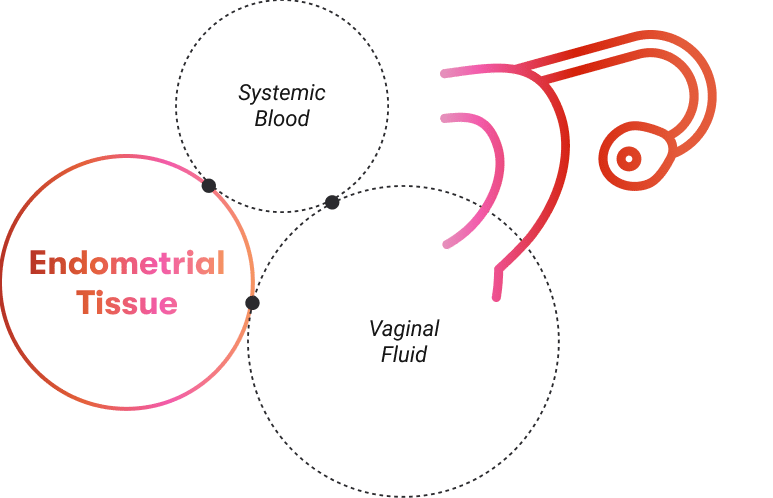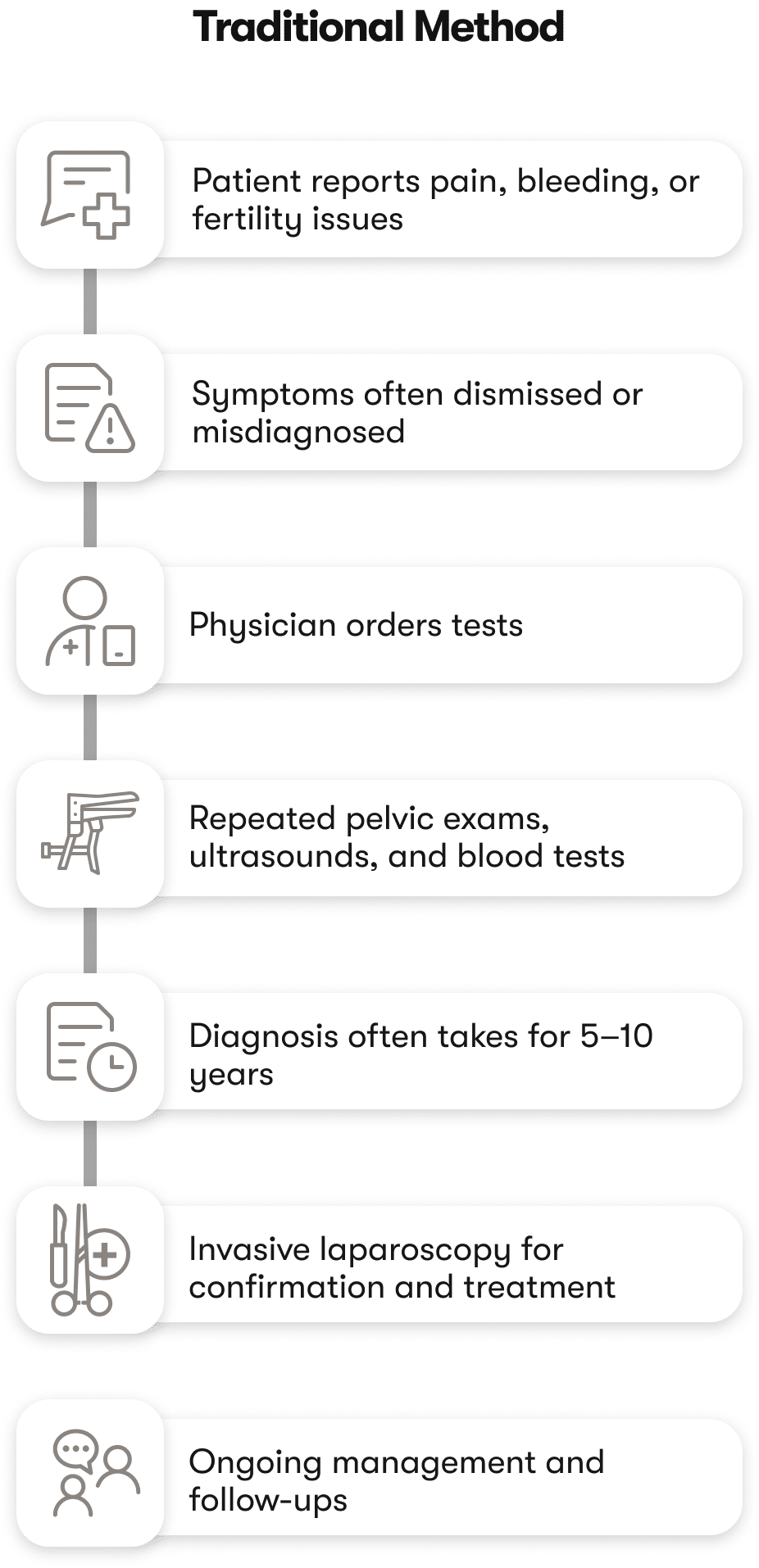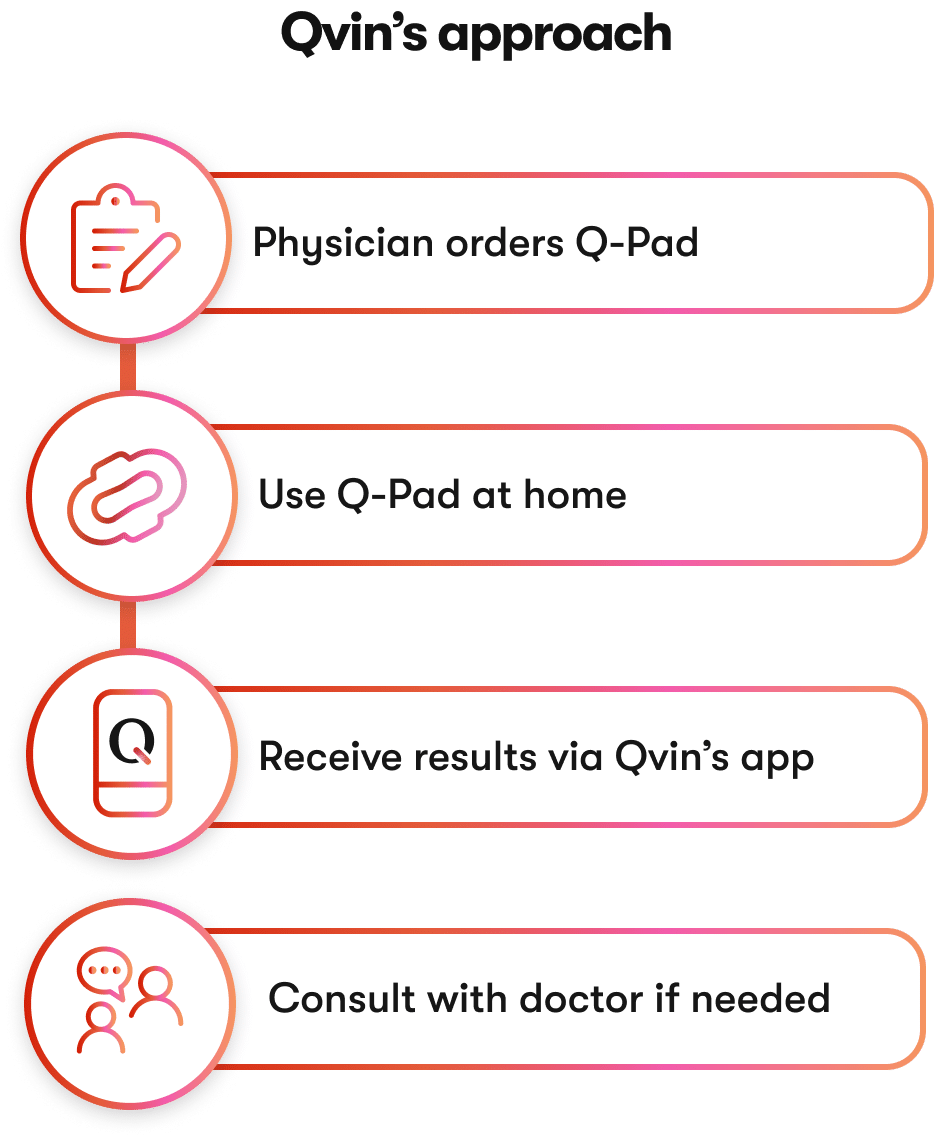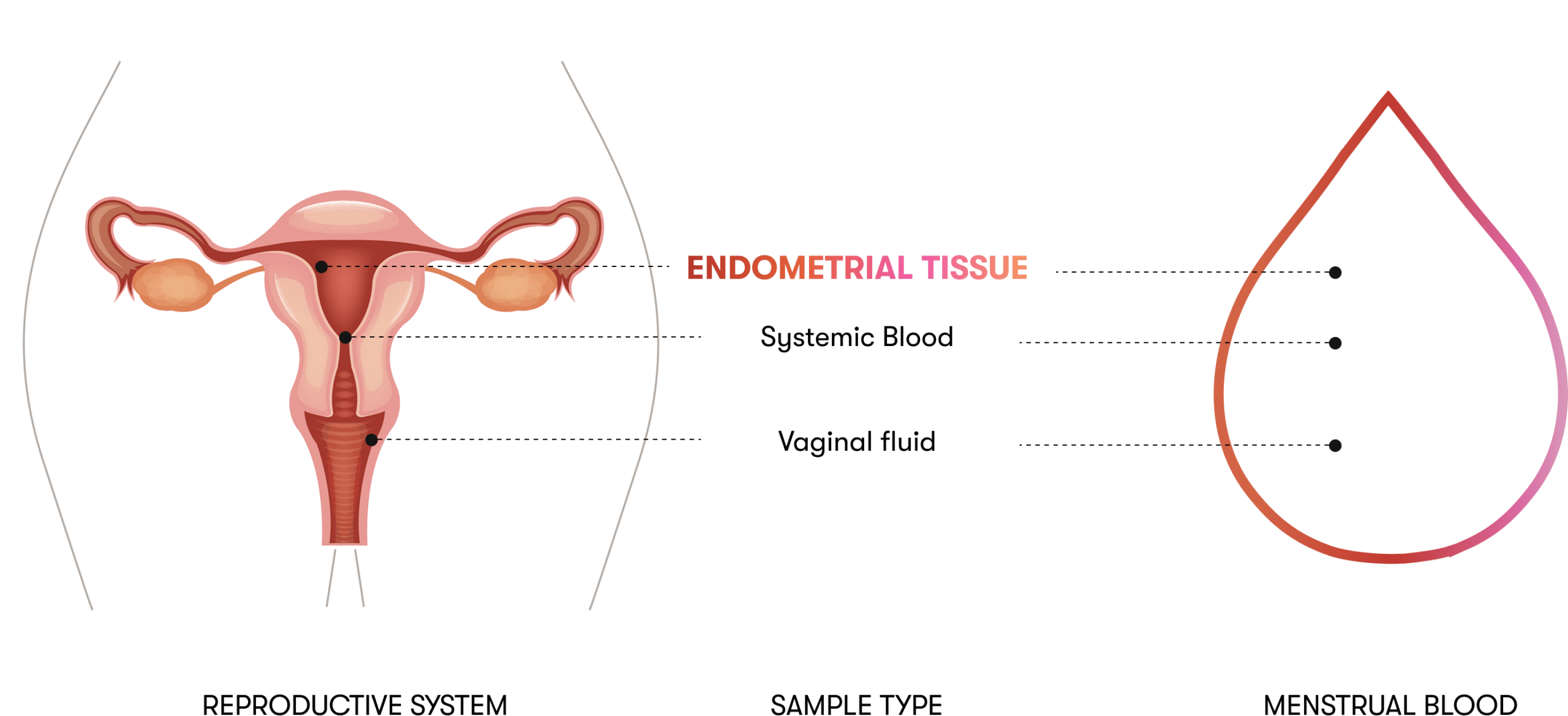DIAGNOSING CONDITIONS
Understanding
Endometriosis
Endometriosis is a chronic condition where tissue grows outside the uterus, leading to pain and potential fertility issues. Early detection is crucial to managing symptoms and preventing long-term complications.

HOW THE CURRENT SYSTEM IS FAILING WOMEN
Detection Is Crucial for Endometriosis Treatment
Endometriosis symptoms are often overlooked or misdiagnosed, delaying diagnosis and treatment. Without early detection, the condition can lead to chronic pain, infertility, and other long-term health issues.
Menstrual blood has shown promise in being a more accessible and innovative approach to earlier detection of endometriosis.
Endometriosis by the Numbers
Reproductive age women and girls are affected globally.
Average delay for diagnosis.
Women with endometriosis may experience infertility.
Qvin Simplifies
Endometriosis Screening


Partner with Qvin
THE PROBLEM
Approximately $78-119 billion was the estimated economic
burden of endometriosis in the U.S. alone in 2022.
THE SOLUTION
Qvin makes blood work accessible, increasing
early detection, reducing costs, and saving lives.

Rationale for the Q-Pad for Endometriosis
Qvin’s Q-Pad is a clinically validated, FDA-listed menstrual pad embedded with dried blood spot (DBS) technology, designed to passively collect menstrual blood (MB) as a non-invasive, self-administered alternative to traditional diagnostic methods. MB is uniquely reflective of the endometrial environment, containing a mixture of whole blood, endometrial cells, immune mediators, cytokines, and a diverse proteomic and lipidomic profile that mirrors intrauterine biology. Studies have shown that MB from individuals with endometriosis exhibits distinct molecular signatures, including elevated expression of estrogen-regulating genes (aromatase, SF-1, HSD17B2) [1], altered lipid profiles [2], and upregulation of inflammatory proteins like CXCL5 and IL1RN [3]. Sensory nerve fibers linked to endometriosis-associated pain have also been identified in eutopic endometrium, further supporting the biological specificity of MB [4]. Importantly, MB contains over 350 proteins not found in peripheral blood or vaginal secretions [5], offering a unique window into reproductive health. Diagnostic delays—particularly among adolescents and young women with dysmenorrhea—highlight the unmet need for early, non-invasive tools [6]. By enabling stabilized, lab-compatible MB collection at home, the Q-Pad offers a scalable solution for endometriosis detection, with studies demonstrating high sensitivity and specificity using Q-Pad-derived transcriptomic and proteomic profiles [1–3]. Compared to invasive procedures or venipuncture, the Q-Pad improves access, compliance, and sample integrity—positioning it as a transformative platform for menstrual blood diagnostics.
References
[1] Gene expression of aromatase, SF-1, and HSD17B2 in menstrual blood as noninvasive diagnostic biomarkers for endometriosis, Amanda CR et al., European Journal of Obstetrics & Gynecology and Reproductive Biology, 2024.
[2] Diagnostic Value of Menstrual Blood Lipidomics in Endometriosis: A Pilot Study, Starodubtseva N et al., Biomolecules, 2024.
[3] DIA-based analysis of the menstrual blood proteome identifies association between CXCL5 and IL1RN and endometriosis, Ji S et al., Journal of Proteomics, 2023.
[4] Detection of nerve fibers in the eutopic endometrium of women with endometriosis, uterine fibroids and adenomyosis, Yadav G et al., Obstetrics & Gynecology Science, 2021.
[5] Proteomic Analysis of Menstrual Blood, Yang H et al., Molecular & Cellular Proteomics, 2012.
[6] Early noninvasive diagnosis of endometriosis: dysmenorrhea and specific ultrasound findings are important indicators in young women, Martire FG et al., Fertility and Sterility, 2023.
[7] Blood biomarkers for the non-invasive diagnosis of endometriosis, Nisenblat V et al., Cochrane Database of Systematic Reviews, 2016.
JOIN US
Early endometriosis detection can
improve health outcomes.
Be a part of the solution and transform endometriosis care.
Funding
If you represent a diagnostic platform, healthcare organization, or country-level agency and would like to work with us, please fill out this form and we will get back to you.
Research
If you are a scientist, foundation, or non-profit interested in collaborating on studies or supporting our innovation, please fill out the form and we will get back to you.
